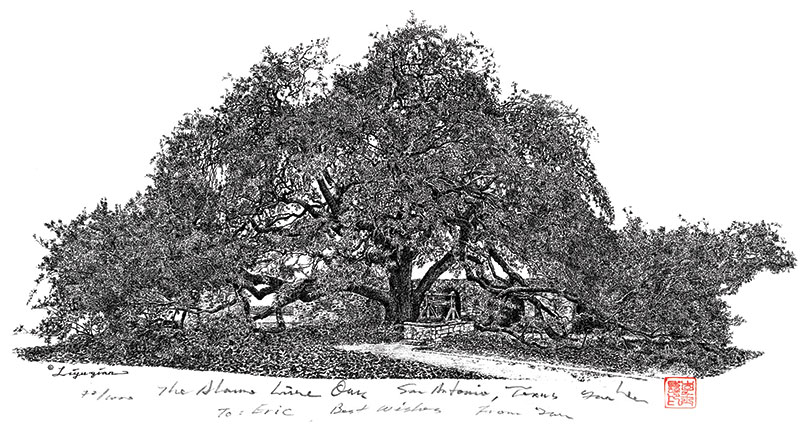 Zigzagging my way through throngs of festival-goers, I’m browsing the eclectic wares of the Bayou City Art Festival in Houston’s Memorial Park. In dappled shade of graceful oaks and towering pines, tightly packed rows of tents—each a self-contained art gallery—flank the park’s walkways.
Zigzagging my way through throngs of festival-goers, I’m browsing the eclectic wares of the Bayou City Art Festival in Houston’s Memorial Park. In dappled shade of graceful oaks and towering pines, tightly packed rows of tents—each a self-contained art gallery—flank the park’s walkways.
The popular outdoor festival, now in its 43rd year, takes place in Memorial Park in the spring and downtown Houston in the fall. More than 300 artists from across North America exhibit everything from colorful and colossal steel sculptures to quirky and flamboyant found-object art.
I venture into one tent that’s packed with patrons to see what the fuss is all about. In contrast to some of the neighboring tents, the gray walls of “Yan Lee’s Big Tree Studio” showcase art with an understated appeal: meticulously detailed pen and ink drawings of trees, with prices starting at $60.
A former geologist, Dr. Yan Lee makes arboreal portraits that spark a sense of wonderment and familiarity. Each piece captures the character of the tree, from the texture of the bark down to the delicate contour of every leaf.
It suddenly dawns on me that these are historic and well-known Texas trees, such as the iconic “Goose Island Oak” in Rockport, the “Treaty Oak” in Austin, and the “Muster Oak” in La Grange.
Yan’s “Alamo Live Oak” piece is drawn so true-to-life that it calls to mind the very first weekend excursion my wife and I took together. Strolling the Alamo courtyard under those shady boughs years ago, we had marveled how the stately oak’s branches coiled on forever, spilling onto the ground. Now a near-perfect likeness hangs before me.
Yan’s personal journey began a world away from the Lone Star State, in the Liaoning province of China. He later earned his undergraduate degree in geology at Nanjing University, and he honed his drawing skills making maps and sketches of geological phenomena and landscapes.
In 1998, Yan immigrated to the Unit-ed States, landing in College Station, where he eventually earned his Ph.D. in geophysics. One day, Yan decided to draw the campus’ famous “Century Tree”—a sprawling live oak that, according to legend, bonds couples who walk beneath its branches.
Drawing the tree awakened a newfound passion, and Yan began developing his technique. In October of 2006, Yan debuted his work publicly at the Bayou City Art Festival.
Yan seeks out trees with history and a story to tell. “First you have to understand the tree. Its age. Its story,” says Yan. He then sketches and photographs it from multiple angles. At his home studio in Spring, he makes his final work with ink on paper.
So far, Yan has drawn about 60 trees in Texas. He’s also branched out to historic trees in other states. His work can be regularly seen at the Bayou City Art Festival, the Cottonwood Art Festival in Richardson, the Main Street Fort Worth Arts Festival, and the Fiesta Arts Fair in San Antonio.
“When I draw the tree, I try to learn from the tree. The tree is my teacher,” Yan says. “I believe that trees are natural works of art that should be protected for future generations.”








